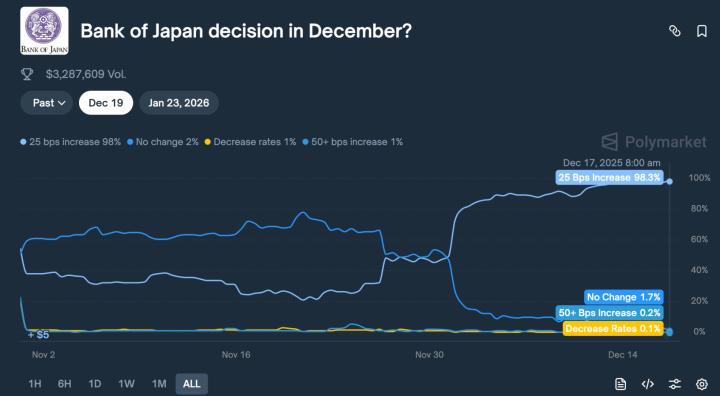Nearly 10,000 participants flocked to the Hong Kong Convention and Exhibition Center, marking the grand occasion of the global Web3 industry's top summit, Consensus, making its debut in Asia. The choice of Hong Kong is not only because it is a testing ground for financial innovation, but also a hub for the flow of values between the East and West. From "tokenized green bonds" to "Hong Kong dollar stablecoin regulatory sandbox," from the "RWA ecosystem" to "decentralized AI," Hong Kong is using policy innovation as an engine to propel the Web3 narrative from technical experiments to deep integration with the real world.
OKG Research has been continuously tracking the development trajectory of Hong Kong's Web3 since 2022, focusing on ecosystem and technological innovation practices, and has produced more than 30 in-depth articles on hot topics such as VASP, stablecoins, and RWA tokenization, while establishing column cooperation with mainstream media in Hong Kong such as the Sing Tao Group and the Ta Kung Pao Media Group to continuously provide industry insights. Seizing the opportunity of the Consensus conference, we are once again focusing on the core topics of Hong Kong's Web3, and launching the "HK Web3 Frontline" special topic, analyzing the past, present, and future of Hong Kong's Web3 from a differentiated perspective.

I. Regulatory Leadership: Orderly Exploration of the Compliance Boundaries of Web3
If we compare the Hong Kong Web3 ecosystem to a building, the reliable and applicable regulatory framework is the foundation. Since the policy declaration was issued at the end of 2022, Hong Kong has been continuously reviewing and improving its regulatory system to promote the autonomous evolution of the virtual asset ecosystem within the boundaries of safety and compliance. By formulating a comprehensive regulatory framework covering virtual asset exchanges, stablecoin issuers, custodial service providers, and over-the-counter trading activities, Hong Kong has paved the way for the interconnection of values in the financial market and long-term innovation.
These measures not only enhance the credibility of Hong Kong's virtual asset market, but also continue to attract capital and enterprises to flow in. By the end of 2024, Hong Kong Cyberport alone has gathered nearly 300 Web3 companies, with a cumulative financing scale of over 400 million Hong Kong dollars.

However, the global Web3 landscape has undergone tremendous changes in the past two years. With the return of Trump to the White House, the crypto regulatory landscape in the US has clearly improved, and the high-pressure punitive regulatory model that has persisted for years is disappearing. Regions such as Singapore and Dubai are also continuously releasing crypto-friendly signals. When the "East rises, West declines" is no longer mentioned, and global Web3 competition becomes increasingly fierce, how should Hong Kong seize this wave of innovation? OKG Research has previously proposed that the development of Web3 and virtual assets in Hong Kong is not only conceptual, but also practical: the Hong Kong government is focused on technological and application innovations that can have a substantial impact on the economy and society. In her speech at the Consensus conference, Ashley Alder, the CEO of the Hong Kong Securities and Futures Commission, also expressed a similar view, "The second trend shaping the future of finance is the integration of Web3 innovation into the real economy."
At the same time, although the scale of the crypto asset market accounts for less than 1% of the global financial system, its rapid expansion and increasing correlation with mainstream financial assets have made its risks undeniable. In many time nodes, Hong Kong and the US seem to be on different paths, but in fact they are the same: while maintaining innovative activities, they are also preventing the potential financial risks brought by this new asset class.

II. Hong Kong Dollar Stablecoin: Hong Kong's "Financial" Ambition
Stablecoins have been a hot topic at this Consensus conference, and have also been a focus area that Hong Kong has been continuously paying attention to and investing in. Standard Chartered Hong Kong, Animoca Brands, and PCCW have recently been reported to be establishing a joint venture, hoping to apply for a license from the Hong Kong Monetary Authority under the new regulatory system to issue a stablecoin pegged to the Hong Kong dollar. Circle, the issuer of USDC, has also previously announced a collaboration with the three note-issuing banks in Hong Kong to launch the HKDCoin, which is pegged 1:1 to the Hong Kong dollar.
Although it is impossible to determine how much of the pie the Hong Kong dollar stablecoin can ultimately capture in the current environment where US dollar stablecoins occupy an absolute market share, for Hong Kong, developing the Hong Kong dollar stablecoin is an inevitable choice to seize the initiative in Web3 development and occupy the future financial opportunities. The connection channel with fiat currency is the most valuable and easiest to accumulate value in the current crypto ecosystem, and stablecoins are the essential infrastructure for building this channel; at the same time, the focus of Hong Kong's Web3 development in the next stage is to break down the barriers between the virtual world and the real world, and stablecoins are the core link connecting traditional finance and the crypto world, and may become a widely accepted payment tool.
But how should the Hong Kong dollar stablecoin be issued? How will Hong Kong manage it? Who will be the first "pioneers"? The article "Seven Questions about the Hong Kong Dollar Stablecoin: Issuance Logic, Regulatory Rules, and Potential Impact" provides answers, and believes that in the short term, stablecoins supported by non-US dollar assets cannot compete with US dollar stablecoins, but through mechanism innovation (such as interest-bearing stablecoins) and application innovation (such as RWA), the Hong Kong dollar stablecoin has the potential to avoid direct competition with US dollar stablecoins and attract more diverse institutions and users to participate.

Of course, we also need to distinguish the difference between the Hong Kong dollar stablecoin and the digital Hong Kong dollar. Although the digital Hong Kong dollar and the Hong Kong dollar stablecoin may have potential competition in the short term, they are expected to achieve resource sharing and complementary advantages in the future: the Hong Kong dollar stablecoin will have a much higher utilization rate, expansibility, and friendliness in the virtual asset market compared to the digital Hong Kong dollar, while the digital Hong Kong dollar will be in a leading position in terms of value support and reliability.
III. RWA Tokenization: From Concept to a Trillion-Dollar Market Fission
RWA is undoubtedly the hottest concept at this Consensus conference. "RWA tokenization is not a trend, but a necessity." The assertion made by John Cahill, Head of Digital Assets at Morgan Stanley, at the "Institutional Investor Summit" reveals the widespread strategic shift of traditional financial giants.
OKG Research has previously proposed that RWA is an important area that Hong Kong should focus on and invest in for the long term, and how to tokenize the huge traditional assets is the biggest development opportunity for Hong Kong's virtual asset industry. Now, Hong Kong has been actively embracing the RWA tokenization wave. The 2024 Policy Address proposed to promote RWA tokenization and the development of the digital currency ecosystem, and the Hong Kong Monetary Authority has launched the "Digital Bond Funding Scheme" to encourage the capital market to adopt tokenization technology. The Secretary for Financial Services and the Treasury of the Hong Kong SAR Government, Christopher Hui, also stated at the Consensus conference that Hong Kong is considering promoting the tokenization of gold.

However, at this stage, the initiative of tokenization narrative is not in the hands of Web3, but more dependent on Web2 institutions, to see if they have enough motivation to change the status quo and tokenize the assets they control. This is not easy for traditional institutions: any new technology trying to migrate traditional assets/businesses to new areas is usually difficult to succeed quickly, because the incremental value it creates may not be large enough, but the cost paid is often very high. The same is true for RWA. But as Wall Street in the US accelerates the layout of the tokenization market, Hong Kong urgently needs more resource-rich and asset-rich institutions to actively participate in tokenization innovation, in order to occupy more initiative in the transformation and avoid being quickly left behind in the competition with the US. How to stimulate market vitality is still an important issue.
In addition, OKG Research in the article How Long Does Hong Kong Have Left to Take the Lead in the Tokenization Wave? also suggested that Hong Kong should focus on the most suitable standardized financial assets for tokenization in the short term, and fully leverage Hong Kong's geographical and institutional advantages as an international financial, trade and shipping center, focusing on tokenization applications in trade and cross-border related scenarios to rapidly expand the scale of Hong Kong's RWA tokenization market.
IV. ETF and OTC: The "Light and Dark Confrontation" of Capital Channels
Another key initiative in Hong Kong's Web3 development in 2024 is the launch of virtual asset spot ETFs. From the clear acceptance of relevant applications at the end of 2023 to the formal listing of 6 virtual asset spot ETFs on the Hong Kong Stock Exchange by the end of April, it took only about a hundred days, which fully demonstrates the "speed" and "efficiency" of the Hong Kong regulatory authorities. The launch of virtual asset spot ETFs has opened up another capital channel for investors to deploy in crypto assets. By the end of 2024, the total AUM of Bitcoin spot ETFs in Hong Kong has exceeded HK$30 billion, accounting for 0.66% of the total Hong Kong ETF market.
Compared to the US, the main advantage of Hong Kong's virtual asset spot ETFs is the support for physical subscription and redemption and the early launch of Ethereum spot ETFs, but these have not brought sustained incremental growth. Although the share of physical subscription ETFs accounted for more than 50% of the initial issuance scale, the Bitcoin holding group is not willing to easily release the liquidity in their hands due to the impact of macroeconomic expectations, and the Ethereum spot ETF is affected by the lack of support for staking. Although the current Ethereum staking yield is only around 3%, the additional income brought by staking is likely to be an important factor in attracting investors, especially traditional financial investors, and is also a key feature that distinguishes Bitcoin and Ethereum.
In addition to the ETF channel, Hong Kong has gradually formed a three-layer capital network of "licensed exchanges-compliant OTC-banks". OKG Research in the article How Can Hong Kong Improve Liquidity in the Crypto Market? stated that the focus of liquidity is currently in the OTC market. Although trading platforms are still the most important infrastructure in the crypto market, recent observations show that crypto liquidity is gradually converging to the OTC market. Currently, the OTC market in Hong Kong handles transaction volumes of nearly $100 billion per year, and thanks to the crypto exchange shops, a regionally distinctive physical product, it not only attracts young investors from around the world, but also has appeal to middle-aged and older participants. In recent years, the Hong Kong OTC market has also attracted the attention of many international trade and cross-border payment users and institutions, becoming another important channel for Hong Kong to gather global capital.
The Hong Kong government is considering bringing OTC under regulatory oversight, which may have a short-term impact on trading activity, but in the long run can help Hong Kong attract more compliant capital inflows, and also help Hong Kong add another channel for free flow of capital in addition to licensed VATPs. Perhaps in the not-too-distant future, a secure and compliant OTC market can not only help improve liquidity in the Hong Kong market, but also become an important channel for connecting the crypto market and the Web3 ecosystem to the real liquidity market.








